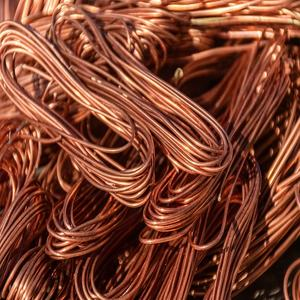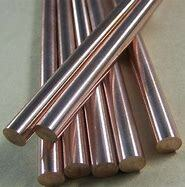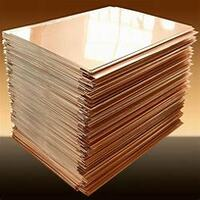1. Introduction
Just 24 hours ago, the London Metal Exchange reported a 3.2% surge in copper prices, driven by rising demand in renewable energy infrastructure and electric vehicle manufacturing. This spike underscores copper’s irreplaceable role in advanced industrial applications—especially in the form of precision-engineered copper rods. Far beyond basic electrical wiring, copper rod is quietly enabling breakthroughs in everything from aerospace welding to lightning-safe earthing grids.

In this article, we’ll dive into two niche yet critical uses of copper rod: high-integrity copper-to-copper joining in demanding environments, and next-generation earthing systems that rely on specialized copper rod variants like copper bonded earthing rods and copper clad steel ground rods.
2. Precision Joining: Copper Rod in Advanced Welding and Brazing
When engineers need to join copper components in high-stress or high-conductivity applications—like in satellite thermal management systems or medical imaging equipment—they turn to copper brazing rod or copper welding rod. These aren’t your average filler metals. Copper to copper brazing rods, often phosphorus-deoxidized, enable clean, flux-free joints that maintain electrical and thermal performance.
Copper rod for welding is especially vital in HVAC and refrigeration sectors. For instance, when repairing or assembling aircon copper pipe systems, technicians use copper rod welding techniques to ensure leak-proof, durable connections without compromising the integrity of thin-walled copper tubing. Unlike soldering, which uses lower-melting-point alloys, copper rod welding creates metallurgically fused joints ideal for high-pressure AC copper pipe lines.

- Copper to copper welding rod minimizes galvanic corrosion risks in pure-copper assemblies.
- Copper brazing rod is preferred for joining dissimilar metals like copper and brass in precision instruments.
- Welding rod copper must meet ASTM B224 standards for oxygen-free conductivity in critical applications.
3. Safety Beneath Our Feet: Copper Rod in Modern Earthing Systems
Lightning strikes, power surges, and static discharge pose serious risks to data centers, telecom towers, and industrial plants. That’s where the copper earth rod comes in—not just any rod, but engineered variants like copper bonded ground rod and copper clad earth rod.
A copper bonded earthing rod features a solid steel core electroplated with high-purity copper, offering tensile strength plus corrosion resistance. Meanwhile, copper clad steel earth rod uses a molecular bonding process to fuse copper to steel, delivering superior longevity in acidic or saline soils. Both are widely specified in IEC 62561 standards for lightning protection.

Contractors often compare earthing rod price versus performance. While solid copper round bar offers the best conductivity, its cost and softness make it impractical for deep-driven applications. Hence, copper bonded steel and copper clad steel ground rods strike the ideal balance—especially for projects requiring 3m+ rod depths.
- Copper earth strip 25x3mm price varies by region but is often used alongside rods for grid interconnection.
- Copper strip for earthing complements rod systems by creating low-resistance surface networks.
- Flat copper strip and flexible copper bus bar are increasingly integrated into hybrid earthing designs.
4. The Recycling Angle: Stripping, Pricing, and Sustainability
With copper rod price climbing, recycling has become economically compelling. Professionals are optimizing methods like the best way to strip copper wire or the fast way to strip copper cable—avoiding outdated, hazardous practices like burning copper wire for scrap.
Modern recyclers use mechanical strippers to recover clean copper strip wire, which can be melted into copper ingot or reprocessed into copper strip roll. Thin copper strips, beryllium copper strip, and nickel plated copper strip from e-waste are especially valuable due to their alloy content.
Interestingly, demand for copper strip near me has surged among small-scale fabricators making custom bus bars or grounding straps. Whether it’s 1mm copper strip for electronics or copper edging strip for architectural detailing, the secondary market is thriving.
5. Conclusion
From the micro-joints in a satellite to the grounding grid beneath a wind farm, copper rod remains indispensable in high-stakes engineering. Whether you’re selecting a copper clad steel ground rod for a telecom site or using copper to copper brazing rods in HVAC assembly, understanding these niche applications ensures performance, safety, and cost-efficiency. As copper prices rise and sustainability demands grow, the smart use—and reuse—of copper rod will only become more critical.
Our Website founded on October 17, 2012, is a high-tech enterprise committed to the research and development, production, processing, sales and technical services of ceramic relative materials such as Copper. Our products includes but not limited to Boron Carbide Ceramic Products, Boron Nitride Ceramic Products, Silicon Carbide Ceramic Products, Silicon Nitride Ceramic Products, Zirconium Dioxide Ceramic Products, etc. If you are interested, please feel free to contact us.

